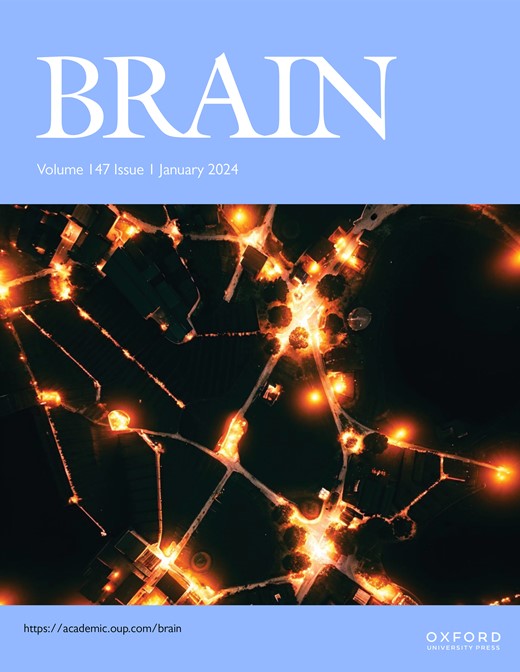Genome-wide association study of neuropathological features in Lewy body disease
IF 10.6
1区 医学
Q1 CLINICAL NEUROLOGY
引用次数: 0
Abstract
Studies assessing genetic associations with neuropathological features in Lewy body disease (LBD) have been limited to candidate gene investigations, and therefore information is lacking regarding the genetic architecture of the neuropathology of LBD. In the current study, we examined a large series of neuropathologically-confirmed LBD cases (N=980 in the discovery series, N=503 in the replication series) and performed genome-wide association studies (GWAS’s) of 11 different neuropathological outcome measures. The 11 neuropathological outcomes included Braak neurofibrillary tangle (NFT) stage, Thal amyloid phase, LBD subtype, Lewy body (LB) counts in five different brain regions, dorsolateral and ventromedial putaminal tyrosine hydroxylase immunoreactivity (TH-ir), and neuronal loss in the ventrolateral part of the substantia nigra (SN). Associations between variants and outcomes were assessed using regression models appropriate for the nature of the given neuropathological outcome and that were adjusted for age at death, sex, and top principal components of genetic data. In the discovery series, APOE rs429358 (i.e., APOE ε4) was associated with a greater severity of each of Braak NFT stage (OR=3.07, P=2.34 x 10-32), Thal amyloid phase (OR=3.57, P=3.28 x 10-29), and LBD subtype (OR=1.78, P=9.85 x 10-9), with similar findings observed in the independent replication series (Braak NFT stage, OR=2.30, P=2.70 x 10-11; Thal amyloid phase, OR=3.17, P=6.39 x 10-18; LBD subtype, OR=2.68, P=3.85 x 10-10). In the subgroup of cases with lower levels of AD pathology (Braak NFT stage ≤III and Thal amyloid phase ≤2), there was a strong association between APOE rs429358 and LBD subtype in even when adjusting for Braak stage and Thal phase in the discovery series (N=218, OR=2.47, P=0.007) and the replication series (N=141, OR=3.60, P=0.006). Although additional genome-wide significant associations were identified in the discovery series between LINC01581/MCTP2 rs547411734 and lower middle frontal LB counts, between TLE3 rs3743309 and lower cingulate LB counts, and between GRIN2A/ATF7IP2 rs1097915 and lower parahippocampal LB counts, these findings were not observed in the replication series. Our results indicate that the APOE ε4 allele is the most prominent genetic determinant of severity of neuropathology in LBD. These findings represent a key step forward in our understanding of genetic drivers of neuropathological features in LBD. Future studies utilizing meta-analytical approaches will be important to more precisely assess other associations that were not quite genome-wide significant in the discovery series.求助全文
约1分钟内获得全文
求助全文
来源期刊

Brain
医学-临床神经学
CiteScore
20.30
自引率
4.10%
发文量
458
审稿时长
3-6 weeks
期刊介绍:
Brain, a journal focused on clinical neurology and translational neuroscience, has been publishing landmark papers since 1878. The journal aims to expand its scope by including studies that shed light on disease mechanisms and conducting innovative clinical trials for brain disorders. With a wide range of topics covered, the Editorial Board represents the international readership and diverse coverage of the journal. Accepted articles are promptly posted online, typically within a few weeks of acceptance. As of 2022, Brain holds an impressive impact factor of 14.5, according to the Journal Citation Reports.
 求助内容:
求助内容: 应助结果提醒方式:
应助结果提醒方式:


